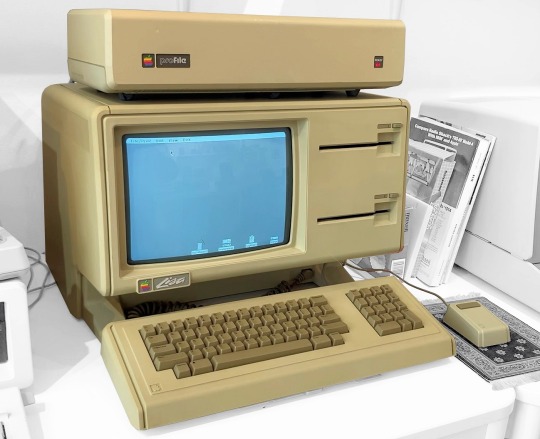#hardware maintenance costs
Explore tagged Tumblr posts
Text
"The California state government has passed a landmark law that obligates technology companies to provide parts and manuals for repairing smartphones for seven years after their market release.
Senate Bill 244 passed 65-0 in the Assembly, and 38-0 in the Senate, and made California, the seat of so much of American technological hardware and software, the third state in the union to pass this so-called “right to repair” legislation.
On a more granular level, the bill guarantees consumers’ rights to replacement parts for three years’ time in the case of devices costing between $50 and $99, and seven years in the case of devices costing more than $100, with the bill retroactively affecting devices made and sold in 2021.
Similar laws have been passed in Minnesota and New York, but none with such a long-term period as California.
“Accessible, affordable, widely available repair benefits everyone,” said Kyle Wiens, the CEO of advocacy group iFixit, in a statement. “We’re especially thrilled to see this bill pass in the state where iFixit is headquartered, which also happens to be Big Tech’s backyard. Since Right to Repair can pass here, expect it to be on its way to a backyard near you.” ...
One of the reasons Wiens is cheering this on is because large manufacturers, from John Deere to Apple, have previously lobbied heavily against right-to-repair legislation for two reasons. One, it allows them to corner the repair and maintenance markets, and two, it [allegedly] protects their intellectual property and trade secrets from knock-offs or competition.
However, a byproduct of the difficulty of repairing modern electronics is that most people just throw them away.
...Wien added in the statement that he believes the California bill is a watershed that will cause a landslide of this legislation to come in the near future."
-via Good News Network, October 16, 2023
#united states#us politics#right to repair#planned obsolescence#enshittification#big tech#iphone#sustainability#ewaste#consumer rights#electronics#good news#hope#california#silicon valley
9K notes
·
View notes
Text
Some headcanons for Mando:
Anything he uses to shower or wash his clothes with is unscented. Those scent-neutralizer dryer sheets keep his clothes from smelling like anything that can be detected while he’s on a hunt. Very few species are exempt from being unable to detect him
He keeps a clean ship and a strict schedule. He’s been self-sufficient and on his own for long enough he knows how to cook and take care of himself. Keeping your tools, gear, weapons, armor, and ship in clean, efficient working order means you’re less likely to have to spend time fixing one of them when it breaks from your lack of routine maintenance, and his body is just another tool in his arsenal; sleep, food, necessary medical care, staying limber and getting vitamin D at some point all go a long way towards ensuring he can last longer in the field. You can’t run something ragged every day and expect for that to be sustainable.
That also means he’s well-equipped to handle long stints without different necessities when needed from time to time; you can push yourself pretty far when you’re already in prime condition.
Wilderness survival skills were some of the first things he learned while being brought up by the Mandalorians. Being aware of your surroundings, setting up and breaking down camp, foraging and hunting for food, building impromptu shelters, purifying water, navigating and tracking, having a variety of general and specific medical knowledge— All of those skills are building blocks for self-sufficiency. You never know when you’re going to be alone or thrust into survival scenarios, so it pays to be prepared.
That also means he’s capable of stomaching a wide variety of what some might consider inedible. Beggars can’t be choosers, and it’s rude to decline someone’s offer of food or hospitality so in any scenario where food is in short supply and/or it’s been offered to him, he’s taking it. As long as it’s something he knows humans can digest, he’s open to whatever cultural or regional dishes his travels have to offer, and he’ll muscle through the less pleasant tastes or textures of food he’s had to make do with when he didn’t have other options.
He does know how to make food taste good, but that more often than not requires more spices and ingredients and hardware than he can afford or spare the room for, so he makes do without. Once the kid comes along he branches out a bit more to make sure he gets some variety.
Along the lines of self-sufficiency and independence, he has a lot of general repair skills: you may not always have somebody who can fix things for you, and he obviously isn’t going to pay somebody else to do something he’s capable of learning, except for when he’s short on time or resources. We see him working on the interior circuitry of his armor in the second episode. He knows how to bypass and pick locks. He has the electrical, mechanical, and structural know-how to fix his ship and would know how to weld and use a torch cutter and a variety of other tools, but it also means he’d know how to sew and mend his clothes. Soft goods are just as necessary as hardware.
Injuries where he genuinely needs professional medical care are few and far in between partially because he’s very good at what he does, and partially out of necessity. Though it is by choice, him tending to his own wounds may not necessarily be because he is neglectful or prideful or has a penchant for pain; medcenters cost money, and submitting to that care means he is vulnerable and at risk of somebody breaking his creed by force, or doing more damage when he can’t fight back. It’s why he likely refuses anesthesia or anything that will put him under and make him unaware of what’s happening while he’s asleep. Either he will find somebody he’s close to to help him, or he will find a way to muscle through self-administered medical care yet again, or he will die from his injuries (which means he will have gone down because of a fight)
Though he has a few physical reference materials and logs he’s written down important details in, a vast majority of his knowledge concerning trade routes, ballistics, geography, maps, various customs and cultures and languages, Guild bylaws— anything he could possibly need to know for a hunt— is committed to memory. He travels light, and the Mandalorians have an oral history more than a written one; belongings and archives can be destroyed, but their people live on and carry the knowledge that’s been passed down through centuries. It just makes more sense to him to commit everything to memory.
That being said, he does a significant amount of research before each hunt anyway, though the bulk of it is centered around the target themselves. Having all of your prep work done means the acquisition itself will go smoother.
He’s mathematically sharp: engine repair, manual piloting, vector calculus, electrical work, ballistics, basic engineering, weapons maintenance, financial management, and navigation by maps or by stars take a lot of mental acuity to understand and apply as quickly as he usually has to use them.
He’s not going to back down from others who purposefully encroach on his personal space, but he dislikes being in close proximity to strangers for extended periods of time. So much of his life is spent evading threats and fighting off challengers it’s hard to trust anybody to be that close. It’s not an aversion so much as it is an irritation that makes him tense. When you’re always looking over your shoulder, it’s just reflex to act defensively.
He doesn’t drink alcohol or caf unless he has sufficient time and he’s secure in the Crest without worry of attack; both impede his marksmanship and reflexes, neither of which are things he can afford while he’s working, so it’s usually only when he’s traveling through space that he’ll indulge
He doesn’t sing, but once the kid comes along he’s found that it’s easier to get him to sleep when he hums as he holds him and walks around the cargo hold.
#Season 1 Mando it should be said. canon to me.#the mandalorian#din djarin#hounds speaks#long post#do not feel like putting this under a readmore. I think it’s fine#The wilderness survival skills and self sufficiency are skills I absolutely stick to when it comes to his characterization#He’s a capable grown adult man living on his own in a difficult trade with a deadly skillset in a galaxy that overwhelmingly wants him dead#MAKE him capable. Figure out the building blocks it takes a person to GET to those capabilities.#c’mon guys. do it for me 🙏🥺#I don’t have like. the fun? head canons. mine are all just script/story/character analysis related#I don’t know his favorite dessert or what contemporary music he likes to listen to. idk if he’s scared of spiders or#if he likes forests or beaches or mountains#All I can do is say ‘‘This guy knows what he’s doing.’’#(Though considering the writing for S2-3 that statement almost seems more like a headcanon now 😒)#NOT THAT I’M BITTER!!#headcanons#do you guys remember hc posts? I remember hc posts#character analysis
72 notes
·
View notes
Text
FNAF SB AU ideas off the top of my head.
You’ve heard of coffee shop AU, now I present:
Fast food. Plenty of options- American, Mexican/“mexican”(cough-TACO BELL-cough), Chinese/“chinese”…
If you’ve never worked fast food (must be nice to be one of the favorites…) it generally sucks. Crazy rushes. Tight on space. Running into each other/swift dodging. You’ll get 20 separate orders of basic shit, cool! All of a sudden, your average order cost of $5-$20, with $50 bein a “big” order ain’t shit bc you just got some asshole in the drive thru askin for 50 $2 value chicken sandwiches & 50 $3 value burgers. “Tf you mean you want 100 sandwiches rn and you’re gonna pay $250 in mostly 5s and 1s??? Sicko. Drop all the mini chickens & I need a full grill of mini burgs for the foreseeable future. Idc that the grease bucket for the grill is overflowing, you know you don’t either. Don’t slip bc they’ll make me clean the mess since I can’t get any biohazard type illnesses.”
You’ve all heard of the beloved Roller Rink AU, we’ve all seen “y/n is pizzaplex janitor” now get ready for their loathed hatechild- retail AU. Naw, not no designer shit. We fightin for our lives in the “MalWart.” “Yeah no it’s crazy that they want us to complete 10 pallets in hardware in 4hr when each pallet takes about an hour… wait WTF you mean they’re all screws and washers???? That whole pallet????? Fuck me… and fuck them. And fuck that pallet actually, bc that’ll take at least 2hr all on its own. Yeah no I did mean that it would take YOU two hours. It would take ME the whole shift. Some of us ain’t blessed with the speed & dexterity of a supercomputer powered body you show off.” (A million possibilities! Deli, bakery, dayshift department options of your choice, overnight stocking, security, etc)
Nothin? Not lovin it?
Tbh I’d suggest some others but I know I’ve seen them already- someone’s already got a general amusement park AU (the fic is somewhere in my 150+ tabs… I will find you…) although they do focus on being a ride operator… so there’s still food & beverage, security, janitor/“maintenance”/“Park Services”, actual maintenance as in like dealin w fixing basic issues like broken chairs/tables, as well as tech dealing with minor errors in rides, lights, audio, etc. character/character “buddy” (think Mickey Mouse & his Disney employee handler).
I’ve also seen like… goth IHop somewhere… I miss you…
Also seen psych ward, school, VR, someone… someone’s got haunt but w jackomoon in a corn maze… (I’m gonna find you again too… you won’t escape my love…) seen street racers, a… surprising amount of cops… hmm…
Aiight I know someone’s got the restaraunt AU, think it’s the same person w a hair salon AU, but!!! HEAR ME OUT!!! Basic restaraunt. Step up from fast food in terms of quality & money earned, BUT!!! We all still fightin to not knock out some of them damn customers. The best part of the shift is when the server gets to slink into the kitchen and stare longingly at the cook, who either eagerly or “grudgingly” makes them a meal. Bonus points for inhaling the food and fighting the chipmunk cheeks away as they rush back out to the floor.
Another idea I had was “translator” as in the human has moved, whether out of personal desire or demand from employers, to another country where they don’t speak the language, one way or another they come in possession of the DCA. DCA can act as a translator, assist in assimilating, take on the roll as your first “friend” in the new place and guidance around the city… idk. I think it would be a cool way to utilize the “computer” part of them.
Also… gaining sentience. Personally I tied it into the “translator” idea- they come to you as a fairly simple animatronic in the sense that they don’t really differ too much in personality between Sun & Moon, generally devoid of much of a personality, baddabing badaBOOM (idk tech, I had them struck by lighting like Dr. Frankenstein type nonsense) they’re suddenly two separate people w whole personalities & shit, but also tryin to figure out this whole “being sentient” thing (which I am not the first to have that specific idea, can’t remember who but I saw someone who did something similar but it was like… some storm related surge at the pizzaplex? And then they started zappin all the animatronics… I… think I know who wrote that, but bc I ain’t sure I’m not sayin shit bc I’d be so fuckin embarrassed if I got it wrong and I gotta go to sleep so I can’t look it up myself right now… so tired.)
#ryan rambles#fnaf#fnaf moon#fnaf sun#fnaf au#fnaf fanfic#fnaf security breach#fnaf sb#fnaf daycare attendant
28 notes
·
View notes
Text

LETTERS FROM AN AMERICAN
January 1, 2025
Heather Cox Richardson
Jan 01, 2025
Twenty-five years ago today, Americans—along with the rest of the world—woke up to a new century date…and to the discovery that the years of work computer programmers had put in to stop what was known as the Y2K bug from crashing airplanes, shutting down hospitals, and making payments systems inoperable had worked.
When programmers began their work with the first wave of commercial computers in the 1960s, computer memory was expensive, so they used a two-digit format for dates, using just the years in the century, rather than using the four digits that would be necessary otherwise—78, for example, rather than 1978. This worked fine until the century changed.
As the turn of the twenty-first century approached, computer engineers realized that computers might interpret 00 as 1900 rather than 2000 or fail to recognize it at all, causing programs that, by then, handled routine maintenance, safety checks, transportation, finance, and so on, to fail. According to scholar Olivia Bosch, governments recognized that government services, as well as security and the law, could be disrupted by the glitch. They knew that the public must have confidence that world systems would survive, and the United States and the United Kingdom, where at the time computers were more widespread than they were elsewhere, emphasized transparency about how governments, companies, and programmers were handling the problem. They backed the World Bank and the United Nations in their work to help developing countries fix their own Y2K issues.
Meanwhile, people who were already worried about the coming of a new century began to fear that the end of the world was coming. In late 1996, evangelical Christian believers saw the Virgin Mary in the windows of an office building near Clearwater, Florida, and some thought the image was a sign of the end times. Leaders fed that fear, some appearing to hope that the secular government they hated would fall, some appreciating the profit to be made from their warnings. Popular televangelist Pat Robertson ran headlines like “The Year 2000—A Date with Disaster.”
Fears reached far beyond the evangelical community. Newspaper tabloids ran headlines that convinced some worried people to start stockpiling food and preparing for societal collapse: “JANUARY 1, 2000: THE DAY THE EARTH WILL STAND STILL!” one tabloid read. “ALL BANKS WILL FAIL. FOOD SUPPLIES WILL BE DEPLETED! ELECTRICITY WILL BE CUT OFF! THE STOCK MARKET WILL CRASH! VEHICLES USING COMPUTER CHIPS WILL STOP DEAD! TELEPHONES WILL CEASE TO FUNCTION! DOMINO EFFECT WILL CAUSE A WORLDWIDE DEPRESSION!”
In fact, the fix turned out to be simple—programmers developed updated systems that recognized a four-digit date—but implementing it meant that hardware and software had to be adjusted to become Y2K compliant, and they had to be ready by midnight on December 31, 1999. Technology teams worked for years, racing to meet the deadline at a cost that researchers estimate to have been $300–$600 billion. The head of the Federal Aviation Administration at the time, Jane Garvey, told NPR in 1998 that the air traffic control system had twenty-three million lines of code that had to be fixed.
President Bill Clinton’s 1999 budget had described fixing the Y2K bug as “the single largest technology management challenge in history,” but on December 14 of that year, President Bill Clinton announced that according to the Office of Management and Budget, 99.9% of the government's mission-critical computer systems were ready for 2000. In May 1997, only 21% had been ready. “[W]e have done our job, we have met the deadline, and we have done it well below cost projections,” Clinton said.
Indeed, the fix worked. Despite the dark warnings, the programmers had done their job, and the clocks changed with little disruption. “2000,” the Wilmington, Delaware, News Journal’s headline read. “World rejoices; Y2K bug is quiet.”
Crises get a lot of attention, but the quiet work of fixing them gets less. And if that work ends the crisis that got all the attention, the success itself makes people think there was never a crisis to begin with. In the aftermath of the Y2K problem, people began to treat it as a joke, but as technology forecaster Paul Saffo emphasized, “The Y2K crisis didn’t happen precisely because people started preparing for it over a decade in advance. And the general public who was busy stocking up on supplies and stuff just didn’t have a sense that the programmers were on the job.”
As of midnight last night, a five-year contract ended that had allowed Russia to export natural gas to Europe by way of a pipeline running through Ukraine. Ukraine president Volodymyr Zelensky warned that he would not renew the contract, which permitted more than $6 billion a year to flow to cash-strapped Russia. European governments said they had plenty of time to prepare and that they have found alternative sources to meet the needs of their people.
Today, President Joe Biden issued a statement marking the day that the new, lower cap on seniors’ out-of-pocket spending on prescription drugs goes into effect. The Inflation Reduction Act, negotiated over two years and passed with Democratic votes alone, enabled the government to negotiate with pharmaceutical companies over drug prices and phased in out-of-pocket spending caps for seniors. In 2024 the cap was $3,400; it’s now $2,000.
As we launch ourselves into 2025, one of the key issues of the new year will be whether Americans care that the U.S. government does the hard, slow work of governing and, if it does, who benefits.
Happy New Year, everyone.
LETTERS FROM AN AMERICAN
HEATHER COX RICHARDSON
#Con Man#Mike Luckovich#Letters From An American#heather cox richardson#history#American History#Y2K#do your job#the work of government#Inflation Reduction Act#technology management#the hard slow work of governing
14 notes
·
View notes
Text
You know, I find it funny and interesting that I ended up on the very niche part of tumblr with t4t horny transhumanism mechs. It’s especially funny because I am not anywhere near the actual target audience for that type of content. I enjoy it from an observer’s perspective, watching people go into detail about something very alien to me is entertaining, but I don’t get turned on by any of this at all.
I enjoy mechs and robots a bunch, and I find the idea of robots and mechs to be dope as shit. I am an advocate for the rights of AI and robots even if they are still only fictional, and would gladly help make mechs and robots a reality if I could. I, however, enjoy them from a purely mechanical standpoint.
When I see a robot, I don’t think “God I wish I could fuck her (rearrange her hardware inside her chassis, install harmless bloatware in her to make her overheat)” or “God I wish that I was a robot girl too”, I think “Oh man, her construction is fucking awesome, I wonder what her schematics are like, I bet she could do all kinds of shit. Imagine the modding potential too.”
When I see mechs, I don’t think about the orgasmic experience of jacking into it and becoming something better, pilot and mech fusing into one whole being and experiencing the pleasure of battle. I think of how I could construct one of those for myself, I imagine the parts necessary, I think of how I could improve on the design and further innovate.
I kinda know my place in this fictional world of transhumanist robot lesbians and mecha/pilot symbiosis. I’m essentially an asexual mechanic. I dont tinker with robots for carnal pleasure, I do it because I am simply preforming routine maintenance, please stop moaning you’re making this weird. I don’t see a mech and dream of my consciousness melding with its into a sacred union, I theorize how I could fit as much weaponry as possible onto it’s frame before it overheats from the stress.
I actually hate transhumanism. I am deeply uncomfortable with the idea of replacing parts of myself with machinery. If the world worked like that I’d probably be pretty odd. I service mechs and androids with passion but am adamantly against body modding or mech piloting. I’d be the weird girl that avoids stepping into the cockpit at all costs, the one that stares concernedly at the pilots who seem so out of it when not jacked in, the one who always seems a little squeamish around people with augments. I think it’s ok for others to do it, go crazy, I don’t mind. I just worry that the normalization will lead to it being harder to live without augmenting, like cars making cities unwalkable.
Idk, that was a lot of rambling. TL:DR I find mech and robo stuff interesting from a mechanical standpoint, and I like this kink for the plot. Yall keep wanting to fuck those bots, good for you!
84 notes
·
View notes
Text

In January 1983 Apple released the first mass-market personal computer with a graphical user interface (GUI): the Apple Lisa.
While GUIs had previously existed, the hardware and maintenance — as well as knowledge to actually use it — was prohibitive to the average consumer.
Apple’s Lisa changed all that — but at a steep price: the cutting-edge machine cost US$9,995.00. That was way too damn much, even by today's standards.
Only 10,000 Lisas were ever sold, but Apple took the overall concept and made it much more affordable with the Macintosh line of computers.
23 notes
·
View notes
Text
Trying to make AI Bros useful.
So I have an R1 from Rabbit.
If you don't know what an R1 is: It's a very nicely designed palm sized block of glossy orange plastic with a small indoor screen, camera, a scroll wheel and a button. It costs $200 and is a really basic Android phone where all the android phone parts are hidden. It uses Perplexity/ChatGTP to answer questions. There's also a LAM - Large Action Model, which doesn't exist, but is supposed to.
The idea is that the R1 will answer questions, find information and be able to take action on your behalf. Many people have done clickbait Youtube videos about how this is a scam.
It's only partially a scam.
The part where you activate the camera, which is unable to see anything until activated, by physically not allowing it to point out the front or back until it's rolled around, and ask it for information about what it sees, is fine.
That works.
The rest...? Bullet point time.
The Bad
The LAM is just a bunch of scripts for using four different websites, all of which are the ones you'd assume a Tech-Bro thinks are important. Uber, Door dash, Yelp. No other websites are supported, and every time one of these services changes their layout the "LAM" goes down for "maintenance".
The GPS is just garbage.
You have to tether it to a Hotspot or SIM that has voice and data. Data alone won't work. The R1 cannot make phone calls.
No app integration: You can't send a message, check your mail etc.
Screen is hilariously shit outside or in bright light
UI prioritises icon of a cute rabbit vs the results.
So WTF?
✨Use Case Scenario!!✨
OK: Imagine you're partially sighted. You pull this thing out of your pocket: It has one easy to find physical button that does nearly everything.
You turn it on with a click.
You double click to go into vision mode.
You hold the button down and say "What am I looking at?"
The R1 then uses a pretty good speech model to describe the scene!
You hold the button down and ask further questions about the image:
"How much is this?" "What's the weight?" "Is there a special offer?"
Or a bill:
"Who is this from?" "Wow much is it for?" "When do I have to pay by?"
Common Arguments
"This could be an app!"
Yes it could be an app and if you have absolutely fine vision and motor control and want to pull a phone out, unlock it, find the icon, then navigate around a UI, go for it. Perplexity is right there, you can use it now. It's fantastic at checking websites (Even ones it's explicitly banned from using) and summarising them.
But again: If you're having to run things by touch, a single button is way easier.
"It wasn't designed as an assistive product so..."
No. And a genuine assistive product is most likely an android phone of the cheapest off the shelf hardware, an OCR app, and a £1,200 price tag. Comes with the cutting edge synthesised voice tech of 1995. The rabbit is $200/£160, and is voice controlled and still somehow has fewer buttons than a device that's supposedly designed for people who can't see buttons.
"Ah but does it really..."
The hype is massive. But I physically have one. One moment. I am now holding it.
Did I run down to the supermarket and test it? Yes. Did it work? Yes. Was it minorly a pain in the ass? Yes.
"You ain't visumably Impaired!!"
Ah, no. Yes. Depends on how nitpicky you want to be.
However, I do have someone here whose vision is basically Noped out, who will be helping me test and either she hates it or I'll have to spend a few hours planning a heist to pry it out of her hands, so I can charge the battery.
7 notes
·
View notes
Text
Top Home Upgrades That Increase Property Value in Houston’s Market
If you’re planning to sell your home in Houston, making strategic upgrades can significantly increase its market value and attract more potential buyers. Houston’s diverse neighborhoods and dynamic real estate market mean that buyers are often looking for modern features and functional improvements. Investing in the right upgrades can lead to a quicker sale and a higher return on investment. Here are the top home upgrades that can boost your property’s value in Houston’s competitive market.

1. Kitchen Remodels: The Heart of the Home
The kitchen is often the centerpiece of a home, and buyers in Houston place high importance on this space. Upgrading your kitchen doesn’t have to mean a complete overhaul. Simple updates like new countertops, modern backsplashes, and energy-efficient appliances can make a significant difference.
Key Upgrades:
Install granite or quartz countertops for a luxurious feel.
Update cabinetry with fresh paint or replace old hardware for a modern look.
Add a stylish backsplash to tie the space together.
Upgrade to stainless steel, energy-efficient appliances.
Pro Tip: Focus on creating a functional layout with ample counter space and storage.
2. Bathroom Upgrades: Create a Spa-Like Experience
Bathrooms are another critical area that buyers carefully evaluate. Enhancing these spaces with modern fixtures and finishes can greatly influence your home’s appeal.
Key Upgrades:
Install double vanities for added convenience
Upgrade to a walk-in shower with frameless glass doors.
Replace outdated tile with contemporary designs.
Add high-end features like rainfall showerheads or heated towel racks.
Pro Tip: Neutral colors and clean lines create a timeless, spa-like atmosphere.
3. Energy Efficiency Improvements
Houston’s hot climate makes energy efficiency a top priority for buyers. Reducing energy costs not only attracts eco-conscious buyers but also increases your home’s overall value.
Key Upgrades:
Install energy-efficient windows and doors to reduce heat transfer.
Add attic insulation to improve temperature regulation.
Upgrade to a smart thermostat, such as a Nest or Ecobee.
Consider solar panels for long-term energy savings.
Pro Tip: Highlight energy-efficient features in your marketing materials to appeal to cost-savvy buyers.
4. Outdoor Living Spaces: Extend the Usable Area
Given Houston’s mild winters and love for outdoor living, creating inviting outdoor spaces is a smart investment. Buyers appreciate homes with functional and aesthetically pleasing exteriors.
Key Upgrades:
Build a covered patio or pergola for shade.
Install an outdoor kitchen with a grill and counter space.
Add comfortable seating areas with weather-resistant furniture
Enhance curb appeal with professional landscaping and outdoor lighting.
Pro Tip: Focus on low-maintenance landscaping options that thrive in Houston’s climate.
5. Flooring Updates: Modern and Durable Choices
Outdated flooring can be a major turn-off for buyers. Upgrading to modern, durable flooring options can transform the look and feel of your home.
Key Upgrades:
Replace old carpet with hardwood, luxury vinyl plank (LVP), or tile flooring.
Opt for water-resistant and scratch-resistant materials.
Ensure consistent flooring throughout open-concept areas for a cohesive look.
Pro Tip: Choose neutral tones that appeal to a broad range of buyers.
6. Smart Home Technology: Appeal to Tech-Savvy Buyers
Smart home features are becoming increasingly desirable in Houston’s market. These upgrades offer convenience, security, and energy efficiency.
Key Upgrades:
Install smart locks and security cameras.
Add voice-controlled lighting and smart plugs.
Upgrade to a smart irrigation system for outdoor spaces.
Pro Tip: Highlight these features in listing descriptions to attract tech-savvy buyers.
7. Fresh Paint and Cosmetic Touches: A Cost-Effective Refresh
Sometimes, the simplest upgrades can have the biggest impact. A fresh coat of paint and minor cosmetic improvements can breathe new life into your home.
Key Upgrades:
Repaint walls in neutral tones to create a clean, modern look.
Replace outdated light fixtures with stylish, energy-efficient options.
Update door hardware and cabinet pulls.
Pro Tip: Don’t forget to touch up baseboards and trim for a polished appearance.
8. Roof and HVAC System Updates: Essential for Houston’s Climate
Buyers in Houston pay close attention to the condition of a home’s roof and HVAC system due to the region’s weather conditions. Ensuring these systems are in top shape can increase your home’s value.
Key Upgrades:
Replace or repair the roof if it’s nearing the end of its lifespan.
Upgrade to a high-efficiency HVAC system.
Schedule regular maintenance and provide service records.
Pro Tip: Offering a home warranty that covers these systems can provide buyers with added peace of mind.
Final Thoughts
Investing in these strategic home upgrades can help you maximize your property’s value and appeal to Houston buyers. Focus on improvements that align with market trends and buyer preferences. Whether it’s a stylish kitchen remodel or energy-efficient upgrades, these enhancements can make your home stand out and command a higher price.
Need personalized advice on selling your home in Houston? Contact a trusted local real estate expert to guide you through the process and ensure your home sells for top dollar.
Connect with me: @tili.realtor
2 notes
·
View notes
Text
Woodworking projects are both creative and rewarding but require careful planning to achieve the best results. Whether you're crafting a simple shelf or a complex piece of furniture, having a step-by-step plan is crucial. Not only does this help avoid costly mistakes, but it also ensures that the finished product meets your expectations. In this guide, we’ll explore the essential steps for planning, preparing, and executing a successful woodworking project.
Step 1: Defining the Project Requirements
Before you start any woodworking project, the first step is to decide exactly what you’re aiming to build. Consider questions like:
What is the primary purpose of this project?
How much weight or capacity will it need to hold?
What design style will best suit the intended space?
Understanding these requirements allows you to create a functional and aesthetically pleasing piece tailored to its purpose.
Step 2: The Importance of Planning in Woodworking
Once you know what you want to build, it’s time to dive into the planning phase. Planning involves assessing three critical factors:
Time: Determine how much time you can realistically dedicate to this project.
Budget: Establish a budget for materials and tools, keeping in mind quality and longevity.
Resources: Check what materials and tools you already have, which can help cut costs.
This planning step is essential to set clear, achievable goals for your woodworking project.
Step 3: Writing Down Requirements and Specifications
Next, make a detailed list of your project’s requirements and specifications. For example:
The types of wood and hardware you’ll need
Exact dimensions for every piece of the project
A checklist of specific features or functions it must serve
Being specific in your requirements helps you avoid last-minute changes or unexpected problems during the building process.
Step 4: Creating Sketches and Detailed Plans
Sketching is a crucial part of visualizing your project. Draw a clear plan, even if it’s a rough sketch. Include measurements and part specifications, as these will guide you during construction. This stage is like a blueprint that brings your idea into a structured format.
Step 5: Choosing the Right Materials
The type of wood you select can significantly impact the project’s durability, appearance, and cost. Consider:
Softwoods: Ideal for lightweight or decorative projects.
Hardwoods: Durable and great for furniture meant to last.
Balance the quality of materials with your budget to ensure you’re getting the best value without compromising on the outcome.
Step 6: Tools Needed for Woodworking Projects
Depending on your project’s complexity, you may require various tools, from simple hand tools to more advanced power tools. Here’s a quick guide:
Essential Tools: Hammer, saw, chisel, measuring tape, and drill.
Advanced Tools: Power saw, router, planer, or jointer.
If possible, make plans that allow you to use the tools you already own to keep costs down.
Step 7: Tool Maintenance and Preparation
Good tool maintenance is vital for precise work. Before starting, check that each tool is in top condition. Sharpen dull blades, lubricate moving parts, and replace any worn or damaged pieces. Working with well-maintained tools ensures smoother cuts and better overall results.
Step 8: Executing the Woodworking Project
Now comes the most exciting part: execution! Follow your plan closely, making sure each measurement aligns with your blueprint. Avoid straying from your plan, as small changes can affect the entire structure.
Step 9: Adding a Proper Finish to Your Woodwork
A good finish not only enhances the wood’s appearance but also protects it. Finishes come in various types:
Stains: Add color while preserving the wood grain.
Varnishes: Provide a glossy finish and additional protection.
Choose a finish that complements your piece, as the right finish can elevate the look of your woodworking project.
Step 10: Final Assembly and Inspection
Once you’ve completed the main construction, it’s time for final assembly. Inspect each joint and fastener to ensure everything is secure. Look for imperfections or sharp edges and sand them down for a smooth finish.
Conclusion
Woodworking projects can be incredibly rewarding when done right. By following these steps, from defining requirements to adding the final finish, you’ll create pieces that are both functional and beautiful. Don’t be afraid to start small, as each project will help you gain skills and confidence.
FAQs
What is the best wood type for beginners?
Pine is an excellent choice for beginners because it’s easy to work with and affordable.
How can I make sure my project is cost-effective?
Reuse materials, plan with essential tools, and opt for quality yet affordable wood.
What safety gear should I use in woodworking?
Always wear safety glasses, gloves, and ear protection when working with power tools.
Do I need a workshop to start woodworking?
No, many projects can be done in a small space with just a workbench and basic tools.
How long do typical woodworking projects take?
The timeline depends on the project’s complexity, but most beginner projects can be completed in a few hours to a few days.
Unlock Your Next Project! Download Your Adirondack Chair Plans Now and Start Building Your Dream Chair Today!
👉 https://craftmasterplans.com
3 notes
·
View notes
Photo

PG-192 Self Propelled Artillery Vehicle
Commission work Following the wake of the first Echerion-Starsect war, the Starsect Republic recognized a dire need in a commonpool armored combat vehicle, as both the strain to logistics of having to supply hundreds of different models of tanks, as well has having to train their crews should one of them fall, was enough to give pause to any military force. The plan was for a single family of vehicles that could be adapted to any changing combat situation and need, from the ubiquitous main battle tank, to armor recovery vehicles, that placed a very strong emphasis on crew protection at all costs. The tank that would lay claim to its fame had its predecessor on Riria tested brutally during the Echerion Syndicates twelve year long siege of the planet. Taking lessons learned during the siege and the various battles that other comparable AFVs were involved with, the company that would ultimately win the contract for the Advanced Armored Combat System program, presented what would later be dubbed the T-190 Therus, a vehicle that showed astonishing promise, with extreme ease of modularization, modification, and strong emphasis on ease of manufacture and maintenance, without compromising the republic's crew survivability requirement, the proto-Therus won in every category with flying colors. While expensive initially, and in spite of many naysayers within the complicated web of the republic's bureaucracy, the new Therus proved to be well worth the investment on a multitude of worlds, especially ones that nearly had their armor cores wiped out by the fanatical forces of the syndicate and were in dire need of an upgrade. It however would not be until the second Echerion-Starsect war where the tank was able to truly test its metal against the syndicate armor and infantry forces. While not uncommon for various Therus tanks to be taken out of action by other tanks or mainly infantry forces with ATGMs, it served its main purpose well in keeping its crew safe, and of course proving its extreme reliability in tandem with its adaptability, the tank served its crews well, and earned its respect in the eyes of many within the Ranger Corps and newly forged Predator Legions, and earning itself an equally fearsome reputation with the forces of the syndicate. The Therus since has served the republic well for the better part of nearly 20 thousand standard years, and the design has seen very little in terms of any major changes, apart from hull armor material composites, electronic equipment upgrades, redundancy backups, and even engines, it still holds itself to the original operational promise of crew survivability and protection, as well as extreme mission flexibility, a reputation that is unrivaled by any comparable military hardware, even in the present day. While a jack of all trades is a master of none, the Therus proved that it's far better than a master of one. Do not use this design without permission.
4 notes
·
View notes
Text
Start earning passive income now: BEMining Cloud Mining Guide

As the cryptocurrency market expands, the idea of making extra profit becomes more and more enticing. Some of the older methods, like trading or staking, require some technical knowledge and a certain level of commitment. But there is a simpler, more accessible option: cloud mining.
BEMining is the leading platform in the cloud mining industry, which allows you to easily earn Bitcoin and other cryptocurrencies with minimal effort. Whether you are new to cryptocurrency or an experienced investor, this guide will show you how BEMining can unlock passive income opportunities for you.

Cloud mining is a method of mining cryptocurrencies such as Bitcoin without owning or managing any physical mining hardware. Instead, clients rent computing power from other centralized data servers to mine cryptocurrencies.
This eliminates the need to:
Buy expensive mining equipment
How to deal with electricity bills
Oversee the maintenance and proper use of equipment
This is an ideal solution for those who want to try cryptocurrency mining but don’t want to go through the technical hassles.
Please visit BEMining.com to learn more about cloud mining and how it works with BEMining.
Why BEMining?
As the demand for cloud mining continues to grow, so does the number of platforms offering these services. Here are the reasons why BEMining stands out:
State-of-the-art technology
BEMining uses cutting-edge mining hardware hosted in optimized data centers. This ensures efficient and reliable mining operations.
User-friendly platform
The platform is friendly to everyone, whether the person is just starting their career or not – signing up, managing contracts, and withdrawing earned amounts don’t cause any difficulties either.
Flexible plans
BEMining offers a range of mining contracts for different budgets and investment goals.
Transparent Operations No hidden fees or surprises. What you see is what you get.
Secure Payments Secure payment methods make it easy to deposit and withdraw funds.
Learn more about our products and start mining now: Start mining with BEMining.
How to start mining Bitcoin with BEMining
Earning passive income with IONMining is quick and easy. Here is a step-by-step guide to get started:
1 Create your account Register with BEMining in just a few clicks and get $15 instantly upon registration
2 Choose a mining plan Choose from a variety of cloud mining contracts that fit your investment goals.
Whether you make a small or large commitment, we have a package that fits your needs.

3Deposit Funds Safely add funds to your account to activate your mining contract.
4Start Mining Sit back and let BEMining's advanced system mine Bitcoin and other cryptocurrencies for you.
5Withdraw Your Earnings You can check your balance and withdraw cash at any time.

Why Cloud Mining is the Future of Passive Income
The cryptocurrency market is booming, and cloud mining is expected to play a key role in its growth. Unlike active trading, mining offers a more stable and predictable source of income. With a trusted partner like IONMining, you can focus on making money and leave the heavy lifting to the experts.
Benefits of Cloud Mining with BEMining:
. Low startup costs . No technical background required . Develop a qualitative and flexible investment plan . Get professional-grade mining technology
Maximize your earnings with BEMining
Here are some tips to help you get the most out of your investment:
1 Reinvest your profits Use your earnings to buy additional contracts and increase your mining power.
2 Diversify In addition to Bitcoin, consider mining altcoins to diversify your portfolio.
3 Stay informed Crypto: Try tracking the movements of the virtual currency market to determine the right direction to invest.
Become a passive income earner today!
Whether you are seeking financial freedom or looking to diversify your portfolio, cloud mining with BEMining is a smart choice. With its user-friendly platform, transparent operations, and advanced technology, BEMining makes cryptocurrency mining accessible to everyone.
Don’t delay — start generating passive income now. Visit BEMining.com to explore your options and start mining Bitcoin today.

Cloud mining is a revolutionary new trend in the cryptocurrency investment space. Companies like BEMining are providing more opportunities to mine Bitcoin while making passive income easily.
That’s why when you choose BEMining, you’re not only buying mining power, you’re also entering into a partnership with a platform that cares about your further success. Join BEMining now and get everything moving in the right direction!
Company Name: BE Mining Investment Group
Company Email: [email protected]
For more information, visit their official website: https://bemining.com/
2 notes
·
View notes
Text
Cloud-based ERP and Business- Right Time to Migrate is Now

Many businesses rely on SAP Business One (SAP B1) to optimize their workflows and increase operational efficiency. However, small and medium-sized businesses (SMBs) with diverse business models require more advanced solutions to stay competitive in today’s fast-paced environment. Cloud technology can address this need, and the SAP Business One Cloud solution offers numerous benefits, giving businesses an edge over competitors.
In this article, we will explore the importance of cloud-based SAP Business One and key factors to consider before migrating your existing SAP B1 to the cloud. Let's begin by understanding the concept of cloud-based ERP.
Importance of Moving On-Premise SAP B1 to the Cloud
A cloud-powered ERP solution differs from an on-premise one in that it doesn’t require any hardware or software installation. As a managed cloud solution, it provides seamless access from anywhere, anytime, as long as there is an internet connection. SAP Business One Cloud is an example of such a cloud ERP solution.
In today’s environment, where digital transformation is key to success, transitioning to a cloud-based solution is a strategic decision for businesses. Migrating your on-premise SAP B1 to the cloud offers benefits such as scalability, agility, and flexibility, all at a lower cost.
For many SMBs and startups, this cloud-based solution helps reduce costs and enhances productivity through the power of cloud technology. However, it's essential to consider several factors during SAP Business One Cloud migration to fully leverage these benefits. Let’s look at these factors before outlining the step-by-step guide for migrating your SAP B1 system to the cloud.
Key Considerations Before Migrating to SAP Business One Cloud
SAP Business One Cloud can provide significant advantages for forward-looking SMEs. However, migrating your existing SAP B1 to the cloud is a complex process with many factors to consider. When deciding to migrate to SAP Business One Cloud, keep the following factors in mind:
1. Cost of Ownership
This is one of the most crucial factors, whether you're deploying SAP B1 to the cloud or migrating your current ERP. Cloud-based SAP Business One requires monthly subscription fees for access to licenses. However, this cost is much lower than that of on-premise solutions, which demand expensive in-house infrastructure and continuous maintenance.
2. Implementation Time
Implementing an on-premise SAP Business One ERP can take anywhere from 3 to 6 months. Many small and mid-sized businesses find this process cumbersome and time-consuming. Cloud migration is generally quicker and more efficient. A trusted managed cloud services provider can handle the migration process with minimal disruption and in less time.
3. Collaboration and Accessibility
With remote or hybrid working becoming the norm post-pandemic, it’s essential to ensure the cloud-based ERP is easily accessible for remote teams. The SAP B1 Cloud should be available to users anywhere, via the internet. Additionally, it should support seamless collaboration between different teams, no matter their location.
4. Reliability of Provider
The reliability of your cloud service provider is a critical factor. Many cloud providers offer cloud migration services, but it’s vital to choose a trusted and reputable one. Understand the terms of maintenance, upgrades, and technical support to ensure minimal disruptions during your SAP B1 migration to the cloud.
Step-by-Step Guide to Migrate Your Existing SAP B1 to the Cloud
SAP Business One Cloud is a popular solution for small and mid-sized businesses. Regardless of the industry, businesses can benefit from a cloud-based ERP solution by migrating their on-premise SAP B1. Here’s a step-by-step guide to completing the migration process effectively:
Step 1: Assess Existing Environment
Before initiating the migration, it’s crucial to evaluate your current setup and business needs. Examine dependencies, customizations, goals, and integrations with the help of a cloud service provider. This will help you identify potential challenges and ensure a smooth transition from on-premise to the cloud.
Step 2: Choose the Right Plan
Managed cloud providers offer various plans to meet different business needs. You’ll need to select a plan that aligns with your company’s size, goals, and performance requirements. Consider factors such as data storage, scalability, and processing power when choosing a package.
Step 3: Backup and Data Storage
During the migration process, protecting corporate data is vital. Make sure to back up your on-premise SAP B1 data to prevent any data loss or corruption during the migration. Using advanced migration tools can help ensure a seamless transfer and minimize downtime while maintaining data integrity.
Step 4: Application and Database Migration
The next step is migrating your SAP Business One application and databases to the cloud server. A technical team from your cloud service provider can assist in ensuring a secure and efficient migration. Once the transfer is complete, validate the functionality of your SAP B1 application in the new cloud environment.
Step 5: Integration and Performance Testing
Thoroughly test all integrations with other business applications and processes to ensure seamless connectivity in the cloud-driven environment. Extensive testing will help identify and resolve compatibility issues, ensuring uninterrupted workflows and synchronized data.
Step 6: User Training and Adoption
Prepare your team for the transition by providing comprehensive training on the new cloud-based environment. This will help users familiarize themselves with the enhanced features, accessibility, and collaboration tools available in the cloud.
Step 7: Go Live and Monitoring
Coordinate with your cloud provider’s support team to finalize the process and go live. Implement robust monitoring tools to track system performance, identify issues, and ensure the continued optimization of your SAP Business One application in the cloud.
By following these steps, you can ensure that your migration process is successful, allowing your business to unlock the full potential of a cloud-based SAP B1 solution.
Conclusion
Migrating your existing SAP Business One on-premise solution to the cloud can be a complex process, but with the right strategy and approach, it can bring substantial benefits to your business. By following the step-by-step guide and considering key factors during the migration, you can ensure a smooth transition and a successful cloud implementation. The right cloud partner will help you minimize downtime and safeguard your data, unlocking new possibilities with SAP B1 Cloud.
B1 Partner Cloud is a trusted SAP solutions provider, offering a full range of services from implementation to maintenance, upgrades, and cloud migration. Contact us today to learn more about how we can assist with your SAP Business One cloud migration.
Source - https://www.b1partner.cloud/cloud-based-erp-and-business-right-time-to-migrate-is-now/
2 notes
·
View notes
Text
How to Choose the Right Micro ATM Service Provider for Your Needs?

In today's world, financial transactions need to be fast, secure, and accessible to everyone. As Micro ATM Services grow in popularity, selecting the right Micro ATM Services Provider is essential for businesses and individuals looking to benefit from these compact and efficient banking solutions. This guide explores key factors to consider when choosing the right provider and highlights the impact of technology-driven solutions.
Understanding Micro ATM Services Providers
A Micro ATM Services Provider is a company or entity that supplies, operates, and maintains Micro ATM devices for business correspondents or other users. These providers play a pivotal role in extending banking services to remote areas by offering hardware, software, and operational support. Choosing a reliable provider ensures that transactions are secure, seamless, and efficient.
Key Factors to Consider When Choosing a Micro ATM Services Provider
1. Reliability and Reputation The reputation of a provider is critical. Research their track record and client testimonials. Providers with proven reliability can ensure consistent uptime and minimal technical issues. Established names in the industry often have better infrastructure and support systems.
2. Range of Services Offered Different providers offer varying levels of services. Ensure that the provider offers a comprehensive package, including cash withdrawals, deposits, balance inquiries, and fund transfers. Some providers also enable utility bill payments and government subsidies distribution. This versatility adds value to the service.
3. Technology and Security Advanced technology is at the core of any successful Micro ATM Services Provider. Look for providers that offer secure devices equipped with biometric authentication and encryption. Technology-driven providers, such as Xettle Technologies, leverage cutting-edge solutions to ensure reliable and safe transactions. Such features are essential to building trust among users.
4. Business Software Integration For businesses, seamless integration with existing systems is crucial. Check whether the provider offers compatible Business Software that simplifies transaction management and reporting. This integration can save time and reduce errors in operations.
5. Customer Support and Training A good provider should offer robust customer support and training programs for operators. This includes resolving technical issues, providing user manuals, and conducting workshops to train business correspondents. Proper training ensures smooth operations and better service delivery.
6. Cost and Pricing Models Evaluate the cost structure of the provider. While affordability is important, it is equally crucial to assess the value offered. Compare pricing models, maintenance charges, and transaction fees among multiple providers to find one that suits your budget and needs.
7. Scalability and Customization As your business grows, your needs might change. Choose a provider that offers scalable solutions and customizable features. This flexibility ensures that the services remain relevant and useful in the long term.
The Role of Technology in Selecting a Provider
Technology is the backbone of Micro ATM Services. Providers that invest in state-of-the-art technology deliver faster, more secure, and reliable services. For instance, companies like Xettle Technologies lead the industry with innovative solutions that enhance user experience. Their focus on secure software, user-friendly interfaces, and robust connectivity ensures seamless financial transactions, even in areas with limited infrastructure.
Benefits of Choosing the Right Micro ATM Services Provider
1. Improved Customer Satisfaction A reliable provider ensures efficient and error-free transactions, which improves customer trust and satisfaction. End-users are more likely to adopt formal banking channels when they experience secure and hassle-free services.
2. Enhanced Financial Inclusion By choosing a dependable Micro ATM Services Provider, businesses can extend banking services to unbanked and underbanked populations. This not only promotes financial inclusion but also fosters economic growth in remote areas.
3. Streamlined Business Operations For businesses, the integration of Micro ATM systems with business software simplifies financial management. Automated reporting, transaction tracking, and reduced manual errors contribute to operational efficiency.
4. Increased Profitability A good provider offers cost-effective solutions that enable businesses to maximize their returns. Affordable maintenance and transaction fees, coupled with reliable service, ensure sustainable profitability.
Challenges in Selecting a Provider
While the benefits are clear, selecting the right provider can be challenging. Connectivity issues in remote areas, varying service quality among providers, and hidden costs are common obstacles. Thorough research and due diligence can help mitigate these
2 notes
·
View notes
Text
Coiled Tubing Insights: A Deep Dive into Services, Operations, and Applications
Coiled Tubing Market Overview:
Request Sample

Inquiry Before Buying
Coiled Tubing Market Report Coverage
The “Coiled Tubing Market Report — Forecast (2024–2030)” by IndustryARC, covers an in-depth analysis of the following segments in the Coiled Tubing Industry. By Service: Well Intervention & Production, Drilling, Perforating, Fracturing, Engineering Services, Milling Services, Nitrogen services and others. By Operations: Circulation, Pumping, Logging, Perforation, Milling and Others. By Technology/Services: Software Solutions, Hardware By Location: On-Shore, Off-Shore By Application: Wellbore Cleanouts, Electrical Submersible Pump Cable Conduit, Fracturing, Pipeline Cleanout, Fishing, Cementing, Nitrogen Jetting and others. By End Use Industry: Oil and gas Industry, Engineering Procurement and Construction Industry, Others By Geography: North America (U.S, Canada, Mexico), South America (Brazil, Argentina, and others), Europe (Germany, UK, France, Italy, Spain, and Others), APAC (China, Japan India, SK, Australia and Others), and RoW (Middle East and Africa)
Schedule a Call
Key Takeaways
North America dominates the Coiled Tubing Market share of 46.6% in 2023, owing to its advanced oil and gas industry, technological innovation, and substantial investments in exploration and production activities.
The development of unconventional resources, such as shale oil and gas, has increased the demand for coiled tubing services. Coiled tubing is often employed in hydraulic fracturing (fracking) operations in these unconventional reservoirs.
Well intervention services, including well cleaning, stimulation, and logging, are major applications of coiled tubing. As older wells require maintenance and newer wells require optimization, as a result growing the Demand for Well Intervention Services using coiled tubing continues to increase.
Buy Now
Coiled Tubing Market Drivers
Increased Exploration and Production Activities
The surge in oil and gas exploration, notably in unconventional resources such as shale, tight gas, and heavy oil, is fueling the demand for coiled tubing services. Integral to well intervention and stimulation procedures, coiled tubing plays a pivotal role in sustaining and augmenting production rates. This heightened exploration and production activity underscores the significance of coiled tubing services in maintaining operational efficiency and maximizing output in the energy sector.
Increasing Energy Demand
The escalating global energy demand propels the coiled tubing market forward. With an ever-growing need for energy resources, particularly in oil and gas sectors, there’s a heightened requirement for efficient extraction methods. Coiled tubing technology offers a versatile and cost-effective solution for various well intervention and drilling operations, catering to the increasing complexities of resource extraction. Its flexibility, mobility, and ability to access challenging environments make it indispensable in meeting the surging energy demands worldwide. As industries strive to optimize production and enhance operational efficiency, coiled tubing emerges as a crucial component in the quest for sustainable energy solutions.
3 notes
·
View notes
Text

new OC, her name is Rune-8. Part of some mlpfim AU stuff about ancient cosmic empires, cloning, and terraforming. She's about the same height as the CMC despite being an adult.
image text: Vat grown pilot a space-faring empire in the distant past. Her ship was destroyed over what would one day be known as Equestria, forcing her to land on the future site of Ponyville. Left to die as the empire fell. Survived untold millennia in the pod's cryogenic stasis. Discovered in a cave by Maud.
Struggling to adapt to the society she finds herself in.
more info, some sketches, and more thoughts under the read more.
please ignore the spelling errors i was high and very sleep deprived when i made this and i do not have the wherewithal to go back and fix them.

basically they're a grown to order clone that was widely used in her society for dangerous or menial work. the template she was grown from is the 'Rune' model pilot. a budget option with the bare minimum implants, optimised for living in low or zero gravity for extended periods. She was loaded with some basic ship maintenance and engineering databases after she was grown, cheap ones, so that the company responsible for the ship she was on could cut costs by not paying for any dedicated engineers. she was the 8th of a crew of 12, and the only survivor when her ship was destroyed in orbit over Equestria.
Their escape pod landed long ago enough that it was submerged in many layers of sediment, lost like a fossil in the cave system below Ponyville.
She clings to Maud, as the first friendly face she met in this strange new world.
Her eyes are cybernetic implants, but she was grown without eyes, and had these implanted before she ever became conscious. They contain hardware that let her wirelessly interface with their ship's computers, and provide her with access to a simple HUD, her personal database, and when in range with a wireless network she can connect and access whatever is stored there.
She is inspired by a Hyracotherium, the prehistoric ancestor of the modern horse, as well as the protagonist from the Murderbot Diaries.
Her body is best suited to low or zero gravity, designed for only temporary stints on planetary gravity. Thus she finds it very difficult and physically taxing to live on the surface of a planet. She is undergoing physical therapy at Ponyville Hospital to try and build up her muscle mass so that she can achieve a better quality of life in the world she is forever stranded in.
Will eventually go on to find a calling designing new and innovative airships, revolutionising public transport in Equestria and it's neighbours.
Vat grown creatures like her are typically genderless, but after some time in Equestria she found herself strangely drawn to mares and femininity. They don't feel the need to label themself particularly, especially in a society that tries as hard as it can to welcome to all identities, but she's something like a trans mare. Prefers she, but is also comfortable with they.
gay little prehistoric horse idk.
#mlp#my little pony#mlp oc#mlp fim#original character#hashtag blogging with aggy#horse drawn art#my oc: rune8#my oc
40 notes
·
View notes
Text
Here's some shit
This factory feels like it's falling apart a lot, holes in the roof that leak every time it rains, random pot holes in the concrete floor, tape machines and veriply machines that barely work and are zip tied and duct taped together, huge plastic tubs that are broken in various different ways and held together literally with tape and cardboard
But instead of spending any money at all on preventative maintenance or replacing any of the machines that we actually use on a daily basis so that they actually run better and smoother and don't have to be patched up with fucking tape and glue like once a week
They decided to spend hundreds of thousands of dollars on a new robot system to replace two workers per shift on a single line
It barely works, fucks up constantly, and it's probably going to be broken in like 5 years at most because no one ever does any fucking preventive maintenance on any of the machines in this goddamn factory and these robots are a lot more delicate than the big arms that work on the presses that don't need a whole lot of maintenance (and yet still need regular maintenance because preventative maintenance is a foreign fucking concept to these people)
That money could have been used to upgrade literally any of the constantly failing machines in this factory, or to replace literally any of the falling apart tubs and carts and everything else
Fucking shelves sometimes even
Or repair the goddamn roof so it doesn't leak directly onto hardware that we use and assemble and ship out as finished product
Or maybe I don't know upgrade the AC so that people aren't burning in a giant oven during the summer time
But no. They wanted shiny new robots. That barely work. That constantly need like two or three people hovering over them at all times because they fuck up like once an hour at least.
This isn't growth. This isn't progress. It's just an attempt to cut out 6 employees total over 3 shifts with something that costs more than like two or three years wages for all of them combined.
That doesn't really solve anything because they had to hire new people specifically to take care of the robots that get paid more because they are robotics technicians
So like
They aren't saving money, they're just making everyone's lives worse because it looked good on paper like 2 years ago
What kind of hell would I be living in if this factory wasn't unionized?
How fucking incompetent was the management before, that this is how they're acting with a union?
3 notes
·
View notes